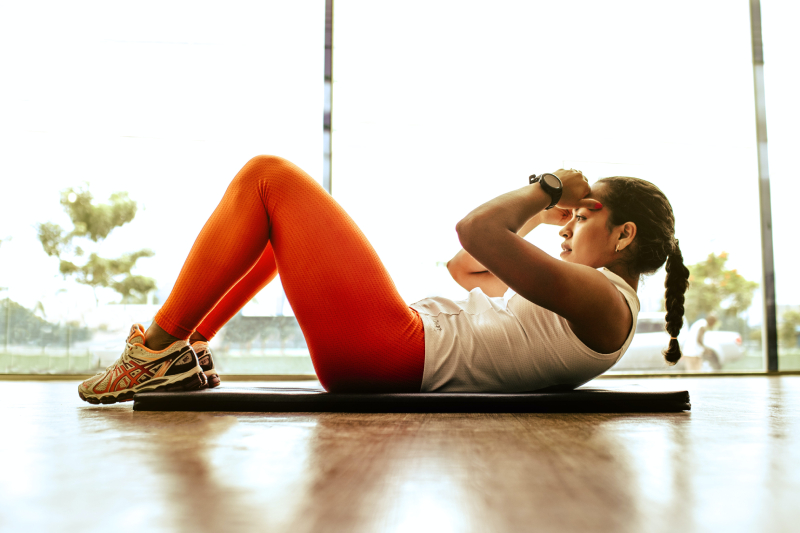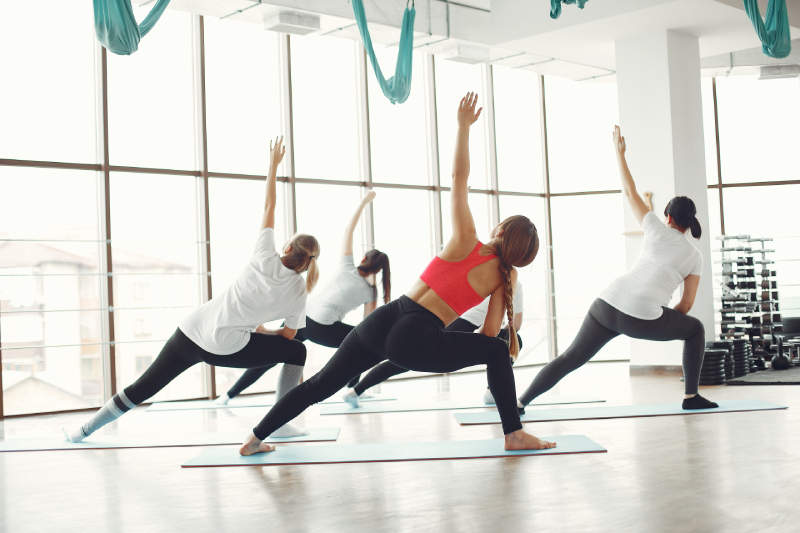The safest workouts to do during Covid-19 outbreak (and what to avoid)

[UPDATED, April 6] In view of the new circuit breaker measures rolled out on April 3, public swimming pools will be closed, as will public sports halls and private gyms and fitness studios.
Since measures have been implemented to encourage social distancing and safe-distancing in public areas during this Covid-19 period, we've been wondering about gym classes, which feature in a huge part of our fitness routine.
After all, these are conducted in group settings that can be as big as 50 pax, and we know how hard it is to stay more than a metre away from someone in a packed HIIT class, or Crossfit, where high-fiving and friendly pats are part of the culture.
Recap: The coronavirus is mainly spread by touching common surfaces or via respiratory droplets when an infected person coughs or sneezes. What this means is we should avoid going to public and populated areas where possible, and that applies to workouts.
This is no reason to skip working out entirely though, since exercise plays a key role in keeping you healthy and your immune system strong.
If your current plan consists of mainly group exercise classes in a confined area, it's time to rethink it.
According to Dr Mandy Zhang, associate consultant at the Department of Sport and Exercise Medicine in Changi General Hospital, "engaging in exercises in a well-ventilated area that has minimal touchpoints will reduce the chance of Covid-19 transmission. Working out outdoors or in your home is preferred to allow for physical distancing while you get your fitness routine for the day."
With that in mind, here are the lower-risk workouts we should be turning to.
Given that many cities in the world are experiencing lockdowns during this Covid-19 outbreak, we are incredibly fortunate to have the freedom (as of now) to head out for errands like grocery shopping - as long as we aren't under quarantine orders or stay-home notices. So when it comes to getting our workouts in, why not milk it?
Running is practically cost-free - all you need are trusty running shoes and a supportive sports bra. Plus, it doesn't involve camping by your phone for a class slot and risking disappointment when you can't get in.
You could run on the treadmill if you're lucky enough to have a gym nearby, but your best bet is to take it outdoors - anywhere that works for you, since being in fresh air (versus an air-conditioned environment) reduces the chances of viral transmission, and getting sunlight (vitamin D) helps to boost your immune system.
Run around your estate (and get to know your neighbours better), at your nearby park or in the woods if you crave a more sensorial experience. If you're used to running with company, now's the best time to start enjoying your own.
This underrated workout is on our radar for good reason - the chlorine and chemicals used to keep swimming pool water clean have been shown to kill traces of viruses.
"Whether it is a public or private pool, as long as the pool is adequately cleaned, filtered and chlorinated at adequate intervals, swimming is considered a safe workout," Dr Zhang says.
Obviously, don't forget about personal hygiene practices - for instance, showering before and after swimming, and disinfecting your hands after coming into contact with public surfaces such as lockers.

Home is truly the safest place to be in times like these. Working out at home basically means zero worry about having touched a contaminated mat, dumbbell or resistance band, assuming there isn't anyone sharing those equipment with you.
Whether you're on YouTube or a fitness app, there are tons of living room-friendly workouts to choose from, ranging from time-based to goal-based and equipment-based. The only problem is deciding which one and committing to it, since there's no trainer or erm, hot dude to keep you accountable.
That said, have fun exploring the countless ways you can move at home, including yoga flows and stretches that only require a mat.
For those with reasons compelling you to join a group class (say, an expiring package or a rigid gym membership), bear in mind that every out-of-home venture poses a risk to yourself and those around you.
You may have heard that the virus does not thrive well in heat (anything above 30 deg C, according to experts). So is it time for hot yoga classes? Unfortunately no, because similar to sauna and steam rooms, hot yoga takes place in an enclosed, damp and poorly ventilated room.
"If an infected person is actively shedding the virus in a room that is enclosed, damp and poorly ventilated, this would increase the chance of viral transmission," Dr Zhang notes.

Physical distancing is a huge factor in containing Covid-19. Thus, it makes sense to minimise activities that involve physical contact (partner exercises included), or contact with large surfaces such as rock climbing.
"In sports that require close proximity and increased touch points between participants, the risk of viral transmission is higher. As such, contact sports such as acroyoga, boxing and other sparring activities can accentuate the risk of virus transmission," says Dr Zhang.
"It is also reasonable to say that exercise venues such as climbing gyms and public spaces cannot be fully sanitised. Hence, one must observe good personal hygiene and be socially responsible during play," Dr Zhang adds.
While gyms and fitness studios may increase cleaning and sanitation of their premises and points of contact, you should do your part to:
For the latest updates on the coronavirus, visit here.
This article was first published in Shape.